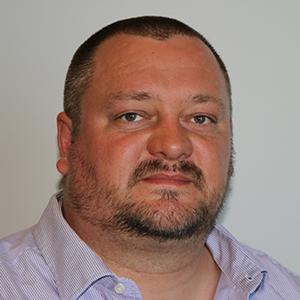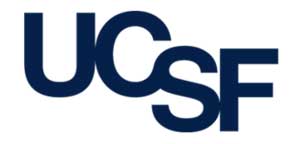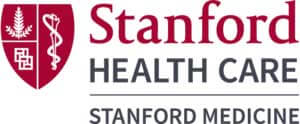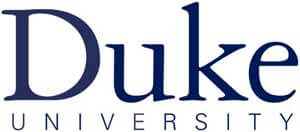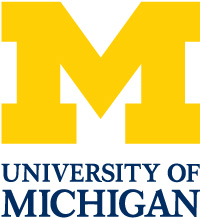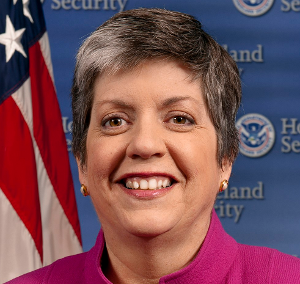Bernhard Zimmermann has been a pioneer in the field of cell-free DNA for more than 15 years. At Natera he was the lead scientist in the development of massively multiplex PCR and the market-leading Panorama non-invasive prenatal test (NIPT). More recently, his team has developed multiple workflows for analysis of circulating tumor DNA using fixed and personalized panels. Results of this work were recently published in an article in Nature entitled, “Phylogenetic ctDNA analysis depicts early stage lung cancer evolution”. In August 2017 Natera launched the personalized Liquid Biopsy test, Signatera, for research use only. Read his full bio.
Interview with Bernhard Zimmerman of Natera
Q: Tell us more about your organization/company. What patient population are you serving and which services are you specializing in?
A: Natera offers a host of proprietary genetic testing services to inform physicians who care for pregnant women, researchers in cancer, including biopharmaceutical companies, and genetic laboratories through its cloud-based software platform.
Reproductive Health and Cord Blood Banking
We serve families on their path to parenthood with a suite of genetic testing products that support preconception, pregnancy and birth. We offer preimplantation genetic testing services,carrier screening for autosomal recessive and x-linked recessive conditions, non-invasive prenatal genetic testing and genetic testing of the tissue from a miscarriage. We also offer cord blood banking for families who wish to preserve stem cells from their baby’s cord blood and tissue after birth.
Oncology Research
We currently have a circulating-tumor DNA product for research-use-only (Signatera RUO) that is in development for clinical use in the CLIA lab. It is being used in clinical trials to monitor disease recurrence and treatment response. Our primary customers are biopharmaceutical companies and we have several collaborations with academic groups. We expect to serve clinicians and patients once our clinical product is available – expected early in 2019.
Signatera (RUO) is the first non-invasive circulating tumor DNA (ctDNA) assay custom-built for treatment monitoring and minimal residual disease assessment. Signatera (RUO) differs significantly from liquid biopsy assays which test generic panels of genes independent of an individual’s tumor. Signatera (RUO) provides each patient with a customized blood test tailored to the mutational signature found in that individual’s tumor tissue. Thereby we are maximizing sensitivity and specificity in order to detect residual tumor via presence of its DNA in the plasma. The body of evidence supporting the utility of this approach for molecular residual disease detection and treatment response monitoring across bladder, lung, colorectal and breast cancers is building and we have presented data at several major oncology conferences this year.
To support the biopharmaceutical market, research is underway to see how our product can help identify the subset of patients that would experience disease recurrence if not treated and those patients where the benefit of the drug or treatment can be proven. We are also able to track additional mutations of interest, up to several hundred mutations, for clinical studies.
Organ Transplant Rejection Monitoring
Natera is applying its expertise in cell-free DNA analysis to detect organ transplant rejection earlier, in an non-invasive and accurate way. When our product becomes available we will be serving organ transplant patients and the clinicians that monitor them. Initially we will be focused on kidney transplant recipients and the nephrologists that care for them.
In transplant monitoring, Natera is quantifying the amount of DNA in a patient’s blood that originates from the donor kidney. In a recent research study we were able to identify acute rejection by detecting the level of donor-derived cell free DNA in the recipients blood. We envision that this test will become a more accurate way to identify acute rejection without an invasive renal biopsy.
Q: Once sequencing has been validated as a clinical solution via trusted workflows, and coinciding with the technological developments driving costs lower, we can expect accelerated human genome profiling for clinical Dx. How soon, do you think, will we see accelerated growth and what can we expect?
A: Sequencing is already validated and being used in our clinical practice routinely. We have performed over 1 million targeted tests. Because of the targeted nature of our tests, broader use of the clinical tests using sequencing is not held back by cost, but rather the speed in which payers and clinical organizations implement reimbursement and medical practice changes. This requires the new methods to be substantiated by robust clinical study data reinforcing the utility of the product.
As an example, in prenatal diagnostics, non-invasive prenatal testing (NIPT) using sequencing has already changed the way high-risk pregnancies are managed and has led to a large reduction in invasive procedures. Natera is actively working towards changing payor coverage and clinical adoption to recommend performing NIPT routinely on all average risk pregnancies as well, and also for microdeletion risk assessments.
In order to gain broader adoption of NIPT and microdeletion testing, Natera has published multiple validation and follow up studies. We also embarked on the SMART trial (SNP-based Microdeletion and Aneuploidy Registry Trial) to substantiate the utility of NIPT for aneuploidy and microdeletion testing with greater evidence. Natera just completed enrollment of the 20,000th patient into this prospective study. The SMART study will be a critically important addition to the field of cell-free DNA screening, and we expect that the results of this study and the wealth of data obtained will push the field of prenatal genetic testing forward, and add significantly to our understanding of microdeletion syndromes.
Natera is also working toward generating and improving the clinical evidence of the clinical utility of our oncology and transplant products to ensure optimal reimbursement coverage and clinical adoption. Ultimately, widespread adoption of sequencing based tests will require a large amount of clinical data. We expect to see increased adoption of these tests in the next 3-5 years.
Q: What makes your healthcare/company service unique?
A: Three things make Natera different.
- We have accumulated a deep understanding and knowledge of cell-free DNA in plasma and how to solve the challenges that the analyte presents. We continuously evaluate and optimize every step of our workflows and built several reagents ourselves to maximize our analysis of plasma cell free DNA. For example, we recently launched an in house developed plasma DNA extraction method in our CLIA lab to improve performance, cell-free DNA recovery,and test robustness, while reducing cost.
- We channel our innovation in statistics and molecular biology to build our proprietary technology toolkit to solve problems that address the needs to build highly sensitive and specific tests. We challenge and pride ourselves on optimizing our technology to get highly accurate and actionable results. For instance, we have developed the ability to multiplex thousands of PCR amplicons in one single assay, in a single tube. We started with developing this capability for reproductive health. Now we’re applying this expertise and extend our toolkit to molecular residual disease detection in cancer, and to donor-derived cell-free DNA in organ transplant patients.
- We are at the forefront of offering state-of-the art products in each of their respective product categories. As an example, Panorama is our flagship reproductive health product. It is one of many non-invasive prenatal tests available. However, our test uses a unique single nucleotide polymorphism (SNP)-based technology to analyze fetal/placental DNA obtained through a blood draw from the mother. It is the only NIPT that differentiates between maternal and fetal DNA in the relevant chromosomes of interest. The test also screens twin pregnancies for zygosity, fetal sex of each baby, and identifies risk for more genetic conditions in singleton and twin pregnancies than any other NIPT. In oncology, we have with Signatera a unique method for detecting circulating tumor DNA in the blood. Our technology is the only one which is personalized for the patient’s specific clonal tumor profile based on an evaluation of the mutations that are known to be present in the tumor for each and every patient, which maximizes sensitivity.
Q: What is your role at and what excites you about your work?
A: I am the head of the molecular research team in Research and Development and part of the company’s leadership and Program (PAC) Approval Committee. I am also part part of the Research and Development Leadership Team where statistics, engineering, program management and molecular biology Development and Research coordinate our efforts to improve products, processes and decision making.
We’re at the forefront of expanding our toolkit and developing novel diagnostic tests. This includes unique abilities in data analysis. When I joined Natera we basically started building a special molecular toolkit on an extremely strong and unique foundation in statistics and data analysis.Five foundational members of the statistics team that were at Natera when I joined the company more than eight years ago are still in our team. I am motivated by the extremely challenging and interesting work and excited to be part of changing the management of disease and ultimately helping improve and save people’s lives. I have been working on analysis of cell-free DNA since 2000 and am extremely gratified so leverage my experience to develop the novel products that aim to define the standard of care of the future. I am now excited to turn my attention to oncology and transplants, and there are still exciting opportunities in the prenatal field.
Q: When thinking about the field you are working in, what are some recent breakthroughs that are propelling the field forward and how will they impact healthcare?
A: For me, it is less about the breakthroughs. It is rather to use the data we’ve accumulated from our tests to better understand how to make our technology better. As an example, Natera recently completed the analysis of over 1,000 NIPT results to develop a fetal fraction algorithm to identify pregnancies at elevated risk for aneuploidies when fetal fraction is extremely low. So, we are using our data to improve our tests and hope to also generate further breakthroughs. We have high hopes in our oncology program that we can leverage our experience in whole exome sequencing and plasma DNA analysis.
The Precision Medicine World Conference (PMWC), in its 17th installment, will take place in the Santa Clara Convention Center (Silicon Valley) on January 21-24, 2020. The program will traverse innovative technologies, thriving initiatives, and clinical case studies that enable the translation of precision medicine into direct improvements in health care. Conference attendees will have an opportunity to learn first-hand about the latest developments and advancements in precision medicine and cutting-edge new strategies and solutions that are changing how patients are treated.
See 2019 Agenda highlights:
- Five tracks will showcase sessions on the latest advancements in precision medicine which include, but are not limited to:
- AI & Data Science Showcase
- Clinical & Research Tools Showcase
- Clinical Dx Showcase
- Creating Clinical Value with Liquid Biopsy ctDNA, etc.
- Digital Health/Health and Wellness
- Digital Phenotyping
- Diversity in Precision Medicine
- Drug Development (PPPs)
- Early Days of Life Sequencing
- Emerging Technologies in PM
- Emerging Therapeutic Showcase
- FDA Efforts to Accelerate PM
- Gene Editing
- Genomic Profiling Showcase
- Immunotherapy Sessions & Showcase
- Implementation into Health Care Delivery
- Large Scale Bio-data Resources to Support Drug Development (PPPs)
- Microbial Profiling Showcase
- Microbiome
- Neoantigens
- Next-Gen. Workforce of PM
- Non-Clinical Services Showcase
- Pharmacogenomics
- Point-of Care Dx Platform
- Precision Public Health
- Rare Disease Diagnosis
- Resilience
- Robust Clinical Decision Support Tools
- Wellness and Aging Showcase
See 2019 Agenda highlights:
- Five tracks will showcase sessions on the latest advancements in precision medicine which include, but are not limited to:
- AI & Data Science Showcase
- Clinical & Research Tools Showcase
- Clinical Dx Showcase
- Creating Clinical Value with Liquid Biopsy ctDNA, etc.
- Digital Health/Health and Wellness
- Digital Phenotyping
- Diversity in Precision Medicine
- Drug Development (PPPs)
- Early Days of Life Sequencing
- Emerging Technologies in PM
- Emerging Therapeutic Showcase
- FDA Efforts to Accelerate PM
- Gene Editing / CRISPR
- Genomic Profiling Showcase
- Immunotherapy Sessions & Showcase
- Implementation into Health Care Delivery
- Large Scale Bio-data Resources to Support Drug Development (PPPs)
- Microbial Profiling Showcase
- Microbiome
- Neoantigens
- Next-Gen. Workforce of PM
- Non-Clinical Services Showcase
- Pharmacogenomics
- Point-of Care Dx Platform
- Precision Public Health
- Rare Disease Diagnosis
- Resilience
- Robust Clinical Decision Support Tools
- Wellness and Aging Showcase
- A lineup of 450+ highly regarded speakers featuring pioneering researchers and authorities across the healthcare and biotechnology sectors
- Luminary and Pioneer Awards, honoring individuals who contributed, and continue to contribute, to the field of Precision Medicine
- 2000+ multidisciplinary attendees, from across the entire spectrum of healthcare, representing different types of companies, technologies, and medical centers with leadership roles in precision medicine

